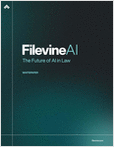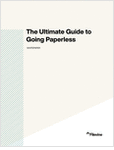On Jan. 24, the ABA Task Force on the Future of Legal Education released its (final) Report and Recommendations [PDF], a 41-page document that supersedes two similar documents produced last year. Much like task forces set up by bar authorities in various states, the ABA panel was created to study the rising cost of law school tuition, the decline in job opportunities for lawyers and even the effects of structural changes to the practice of law and lawyer supply [PDF]. As with examinations of the reports produced by its state bar counterparts, analysis of the ABA report’s most salient topics depicts a mix of good ideas and disappointing confusion. Here’s a rundown (relevant page numbers are in parentheses but aren’t necessarily exhaustive citations).
1). Unlike earlier drafts, the final report no longer describes the training of lawyers as a “public good,” but rather something that provides “public value.” (6-7)
What’s good: Nothing.
What’s baffling: Earlier versions of the report claimed that legal education (in the broad sense) was both a “private” and “public good,” a statement I criticized at the time. Public goods have a very specific definition: People cannot be excluded from obtaining them, and they cannot be exhausted. An example is national defense. Last year, the task force attached the term to legal education in an effort to manufacture a tension between the alleged good things that training lawyers does for society and what it supposedly does for lawyers themselves.
The report now says that the training of lawyers “provides” public or private “value” instead of referring to it as a “good,” but the task force doesn’t define this new terminology, which only creates confusion. Furthermore, the term “private good” appears on page 25 of the report, implying that the authors simply attempted to substitute words to evade criticism.
Indeed, for all its careful efforts to craft this contrived private/public value distinction, the task force pretty clearly comes down against formal legal education as providing public value when training lawyers. Elsewhere in the report, the panel comes out in favor of the limited licensing of legal practitioners (3, 14, 24-25), fewer undergraduate requirements for lawyers (33), fewer law school requirements (28), the uniform bar exam (33), more law school “heterogeneity” (23-24), and substantial accreditation reform allegedly aimed at reducing the cost of law school (2-3, 12, 24, 31). The task force even implies that law schools aren’t providing students with core lawyering competencies (26) and that law schools aren’t benefiting society by absorbing federal loan dollars (22).
By contrast, the best example of “public value” contained in the report is faculty scholarship (7), but subsidized postbaccalaureate law programs aren’t necessary to produce journal articles. The task force’s other examples of law schools providing “public value” are even less convincing.
2). The task force believes that “The Financing of Law-Related Training Should Be Reengineered.” (22)
What’s good: Stating that “the current system for financing law school education harms both students and society,” the task force indicates that reforming the federal student loan program should be a priority. And though the report can be accused of punting the question of how to deal with the Federal Direct Loan Program to a future task force (30), I’m willing to believe it’s acting in good faith. I doubt that any task force convened from here on would sincerely recommend maintaining the government loan system as it is.
What’s baffling: The report tellingly doesn’t ask who benefits from how law school is currently financed. If it weren’t pulling its punches, the task force would concede that the loan program is not a negative-sum system; loan dollars go to law professors, universities and the lucky students who receive merit scholarships. Yes, the program may supply legal employers with an inflated number of docile workers who have few alternatives to pay off their debts, but that’s an indirect effect. The report’s findings suggest that the task force is surprisingly uninterested in why a social initiative such as the Federal Direct Loan Program does not in fact help society, to say nothing of its intended beneficiaries, i.e., poor people and minorities. The task force appears unwilling to walk through the door opened by its own recommendations.
Unfortunately, adopting a framework like the Bennett Hypothesis, which explains how law school becomes more expensive as the government loans people increasing amounts to pay for it, strongly indicates a moral problem with what law schools do. Such frameworks emerge from a social theory of positional goods, which are goods whose benefits to their owners by definition come at equal cost to everyone else who lacks them—and frequently create net social losses thanks to rent-seeking by their sellers. If the task force doesn’t want to “moralize blame” (9), then why is it adopting frameworks that do so?
3). The task force recognizes that demand for law graduates’ work in part determines their wages.
What’s good: Unlike state bar reports, the document produced by the ABA task force actually reflects an awareness of the law of demand. For example, on page 13 the ABA report states, “The economy of law and related services and the associated employment market have changed sharply in recent years. … These changes have had a substantial and adverse impact on employment opportunities for new and recent law school graduates.” It also says there is a “low prospective return on investment” for opening a practice in a rural area. Nowhere does it say anything as absurd as “Law graduates pass the cost of their student loans onto clients.” I count this as progress.
What’s baffling: The task force nevertheless indulges in a frustrating, unshakable cost-of-production theory of legal services pricing. According to the report, poor and rural communities aren’t underserved just because of lack of demand; rather, it isn’t “cost-effective” (3, 13-14) for J.D.–holding lawyers to practice in these communities. The implication: ABA–educated lawyers are “overtrained” and thus too expensive for the people who live in these areas to afford. The report’s solution is to encourage states to adopt rules that allow limited-licensed legal practitioners to serve such clients, as Washington State has. However, demand for equivalent work will determine how much lawyers and limited-licensed practitioners can charge, irrespective of their training. Consequently, limited-licensing systems probably won’t add much value for poorer clients or, worse, may encourage the unauthorized practice of law.
Additionally, it’s been nearly seven years since The Wall Street Journal first pointed out that demand for legal services has been flat for quite a while, yet even in 2014 bar authorities still focus only on the Great Recession’s impact and not the long-term structural problems the U.S. legal sector has been facing. The financial panic and subsequent depression exposed the truth of what had been going on for a long while, and the Journal’s findings have been repeatedly corroborated by analysis of Labor Department and state government data of law graduate and attorney overproduction. Demand for private legal services grew rapidly until about 1990. It recovered only slightly amid the stock bubble, and has been in decline for the last ten years. This information is publicly available (pending BEA data revisions) and largely beyond dispute. Why bar authorities won’t acknowledge it when discussing the ailing legal sector is, to me, the biggest baffler of the task force’s report.
4). The task force accepts that certain information signals encourage counterproductive, wasteful behaviors in legal education.
What’s good: The task force acknowledges in bits that law schools, the U.S. News rankings and law school applicants evaluate one another based on crude information signals, such as LSAT scores, that contribute to the rising costs and other inefficiencies plaguing legal education.
What’s baffling: … But only in bits. The report says law schools compete for highly credentialed students (2, 22, 23), but doesn’t say why. It claims that the U.S. News rankings transmit misleading information to law school applicants (10), but doesn’t offer any insight into why the magazine is so popular if its representations are so misleading—or why law schools continue to supply it with information. Likewise, the task force sees a shift toward what it describes as a “consumer outlook” (9-10) in applicants’ demands for accurate data on graduate outcomes, but it seems to believe this shift came out of the blue and has nothing to do with how law schools broker jobs for their graduates based on their pedigree. Further, the report suggests that law schools’ costs grow because they’re under “pressure to deliver services and engage in functions other than core instructional services” (11), but does not disclose where that pressure comes from.
Most glaringly, the report makes absolutely no mention of legal employers relying on any rankings, much less whether they evaluate job applicants based substantially on the prestige of the law schools they attend. The bigger the role these crude signals play in legal education, the less law schools can be said to be providing “public value” however it is defined. Attending an elite law school becomes more important than learning anything there.
Such signaling pathologies corrupt the legal profession. They cannot be excised either, unfortunately, so long as the concentration of wealth ensures that some lawyers earn large sums of money while others never enter the practice of law in a meaningful way. Legal employers, which the task force says have abandoned their traditional role of training law school graduates (16), have always benefited from a surplus of eager, pregraded law students willing to fill their openings, which gives them little incentive to reform the signaling system.
That said, the task force’s various recommendations for easing licensing requirements might mitigate some of the risk prospective lawyers would take on.
5). The task force asserts that faculty “culture” causes resistance to change in law schools (4, 15-16, 27).
What’s good: Nothing. This finding makes no sense at all.
What’s baffling: How does one measure “culture”? How is faculty “culture” not dominated by unaccountability for federal loan dollars? The problems with legal education come from institutional incentives, not some nebulous culture.
6). Stuff that goes unmentioned
What’s good: Nothing, by definition. These things should have been mentioned.
What’s baffling: Here’s my list:
• As noted above, the task force report implies that legal employers have apparently played no role in maintaining the current legal education and law licensing system, nor have they benefited from it.
• If the task force wants limited licensing and other looser licensing requirements, then why doesn’t it discuss policies that have been used in the past or are in use elsewhere, such as apprenticeship or articling?
•The task force says nothing about restoring full bankruptcy protections for student loans, an obviously important point given the poor job prospects available to current law school graduates and the testimony from many of them that they didn’t receive any training in core lawyering competencies.
• What about public law schools that have gone off their states’ subsidies? What’s the point of such schools if they aren’t providing affordable legal education to their states’ residents? Do some states have too many public law schools? This is an entire area of discussion the task force should have addressed.
• Should bar exams be reformed too? The uniform bar exam is fine, but do the lawyers of the future need to know about the difference between sublateral and subjacent support when they’ll be practicing immigration law? I don’t see why easing licensing requirements doesn’t include bar exam reform.
To its credit, the ABA Task Force on the Future of Legal Education’s (final) Report and Recommendations avoids some of the sloppy mistakes its peers have made. However, it contains enough inconsistencies and notable omissions to raise questions about how effective the final policy outcomes will be. Hopefully, this task force’s successors will understand the facts better and advocate for their policies more clearly.
Matt Leichter is a writer based in Brooklyn, New York. He received his dual degree in law and international affairs from Marquette University. He operates The Law School Tuition Bubble, which archives, chronicles and analyzes the deteriorating American legal education system. It is also a platform for higher education, student debt and fiscal reform.






